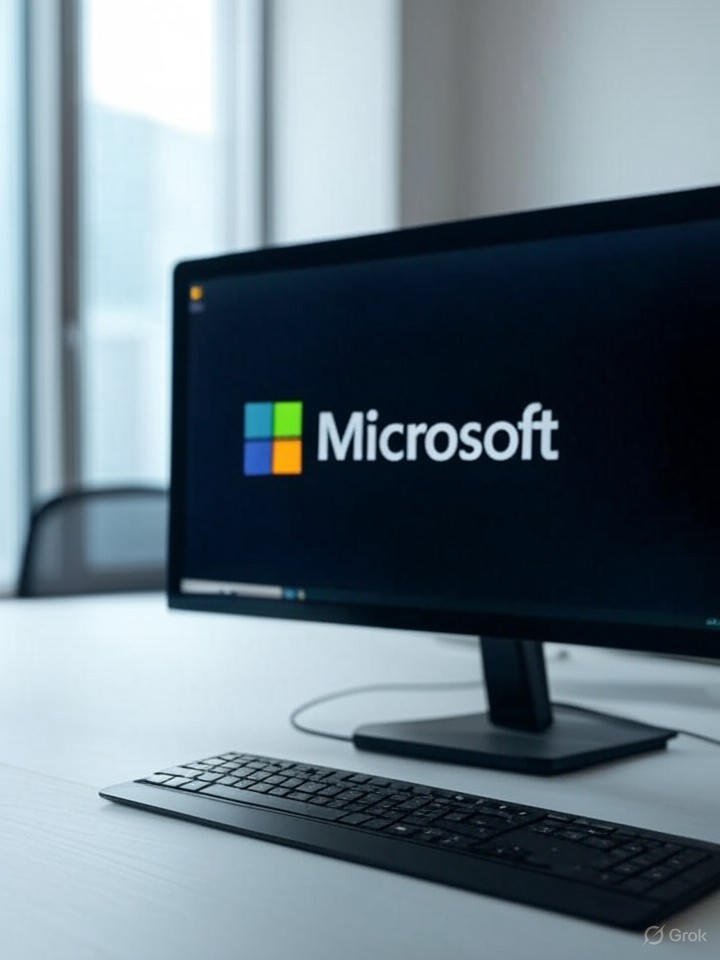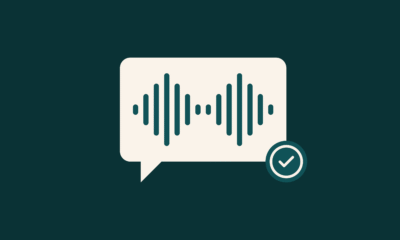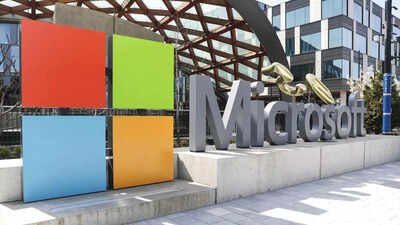Tools & Platforms
Why Tech Giants Must Upskill Society

NEW YORK, NEW YORK – DECEMBER 04: Sundar Pichai, C.E.O. of Google and Alphabet, speaks during the New York Times annual DealBook summit at Jazz at Lincoln Center on December 04, 2024 in New York City. The NYT summit with Andrew Ross Sorkin returns with interviews on the main stage including Sam Altman, co-founder and C.E.O. of OpenAI, Jeff Bezos, founder and executive chairman of Amazon and owner of the Washington Post, former U.S. President Bill Clinton and Prince Harry, The Duke of Sussex, among others. The discussions will touch on topics such as business, politics and culture. (Photo by Michael M. Santiago/Getty Images)
Getty Images
On August 6, 2025, Google CEO Sundar Pichai announced an initiative to provide free access to advanced AI tools and training programs for college students in the US, Japan, Korea, Indonesia and Brazil. This move signals that AI is quickly becoming as indispensable as computers in the early 2000s and the internet in the 2010s. For students, access to AI capabilities is no longer optional but is being made as a necessary part of learning.
College Students to Generate Research Reports with Gemini 2.5 Pro for Free
Google’s new offerings include an array of sophisticated tools. Students can use Gemini 2.5 Pro, an advanced AI model capable of answering questions, generating images, and providing quick help with homework and writing tasks. The platform also features Deep Research, which streamlines the process of gathering in-depth, web-wide information for custom research reports. NotebookLM acts as a personal thinking assistant, helping students organize ideas. Veo 3 allows users to transform text or images into short videos with sound in just eight seconds. Additionally, Jules, an AI coding assistant, offers higher limits for asynchronous coding tasks. Students also enjoy 2 terabytes of storage across Google Photos, Drive, and Gmail.
On top of these functions, Google introduces a new mode called Guided Learning in Gemini, which can show students step-by-step processes in solving a problem via rounds of conversations to help students “understand” rather than giving “answers” direclty.
This array of resources signifies a profound shift: AI is becoming ingrained in education, akin to how digital tools revolutionized learning decades ago. However, more than many other technologies, AI frequently sparked debates over plagiarism and academic integrity. Just a few months ago, a grad student using AI on exams was expelled from the university. Now, the deployment of free AI tools to college students indicates a recognition that AI’s role in education is becoming inevitable. Like the transition from handwritten theses to digital word processing, we can expect that possibly within a year or two, AI will be a routine part of students’ academic workflows, from data analysis and presentations to group projects and writing assignments.
This transformation presents both promising opportunities and notable challenges. On the positive side, democratizing access to AI enables students to learn more efficiently, explore broader and deeper materials, and develop skills aligned with the demands of the future workforce. Google’s integration of career certificate programs alongside these AI tools exemplifies this approach, aiming to equip students with practical skills that will serve them in their careers.
The History of Tech Companies Upskilling Society
Looking back at the computer literacy boom of the 1970s and 2000s, tech giants like IBM and Microsoft played pivotal roles, not just by providing tools and resources but by fostering partnerships with educational institutions. For instance, in 1971, IBM initiated its Faculty Loan Program, under which IBM employees visited colleges training students of color and of diverse abilities. Microsoft initiated the Working Connections program in 1997 in collaboration with the American Association of Community Colleges to develop an IT curriculum serving students with limited resources. These collaborations produced generations of engineers and scientists who fueled industry growth.
This corporate upskilling mirrored, and sometimes sparked, broader open education movements. When MIT launched the OpenCourseWare in 2001, it demonstrated how technology could democratize elite curricula. Later, edX (co-founded by Harvard and MIT) scaled this globally. Recently, MIT just launched a new platform called the MIT Learn to continue this tradition, offering over 12,000 items of free resources in everything from machine learning ethics to cell biology.
Today, Google is well-positioned to play a similar role, leveraging its scale, resources, and industry ties to train the next generation of skilled workers. Google’s extensive infrastructure and established networks afford it a strategic advantage in deploying large-scale, impactful educational initiatives. But AI start-ups such as OpenAI, Anthropic and many more should also join the effort to prepare the next generation with skills needed to succeed in the age of AI. When AI enhances productivity, potentially replacing many entry-level jobs, it becomes vital that the resulting surplus is reinvested into society, creating new opportunities rather than widening inequalities.
Upskilling or Deskilling: the Risks of Overreliance on AI
Nonetheless, the widespread availability of free AI tools raises important questions about their impact on learning. Will dependency on AI diminish students’ ability to think critically, write persuasively, or master foundational skills like coding and logical reasoning? College remains a critical stage for developing these competencies, foundations that underpin careers in law, finance, education, arts, healthcare, technology and public service. If AI replaces too many opportunities for students to engage deeply with writing, problem-solving, and conceptual understanding, we risk cultivating a generation overly reliant on AI, similar to needing a calculator for basic math.
Therefore, AI companies must carefully consider how to deliver tools that truly motivate students to learn and to solve hard problems rather than compromising their curiosity and integrity. Instead of offering free AI functions with minimal guidance, they should collaborate with colleges and even k-12 schools to develop educational programs that foster critical thinking, creativity, and mastery of core skills. The goal should be to empower students to adapt to an AI-driven world, rather than fostering dependence or complacency.
Integrating AI into education offers tremendous promise, but it also demands responsible stewardship. Enterprises, educators, and policymakers must collaborate to ensure AI serves as a tool for empowerment and skill-building. Only then can we prepare a future workforce capable of harnessing AI’s benefits, while maintaining the essential skills such as lucid writing, logical reasoning, critical thinking and ethical judgment.
Tools & Platforms
Your browser is not supported
northjersey.com wants to ensure the best experience for all of our readers, so we built our site to take advantage of the latest technology, making it faster and easier to use.
Unfortunately, your browser is not supported. Please download one of these browsers for the best experience on northjersey.com
Tools & Platforms
Your browser is not supported
jsonline.com wants to ensure the best experience for all of our readers, so we built our site to take advantage of the latest technology, making it faster and easier to use.
Unfortunately, your browser is not supported. Please download one of these browsers for the best experience on jsonline.com
Tools & Platforms
Microsoft Launches In-House AI Models to Reduce OpenAI Dependence

Microsoft’s Strategic Pivot in AI Development
Microsoft Corp. has unveiled its first in-house artificial intelligence models, marking a significant shift in its approach to AI technology. The company announced MAI-Voice-1, a specialized model for speech generation, and a preview version of MAI-1, a foundational model aimed at broader applications. This move comes amid growing tensions in Microsoft’s partnership with OpenAI, where the tech giant has invested billions but now seeks greater independence.
According to details reported in a recent article by Mashable, these models are designed to enhance Microsoft’s Copilot AI assistant, integrating into products like Bing and Windows. The launch raises questions about the future of Microsoft’s collaboration with OpenAI, as the company aims to reduce its reliance on external AI providers.
Implications for the OpenAI Partnership
Industry observers note that Microsoft’s heavy investment in OpenAI, exceeding $10 billion, has fueled much of its AI advancements. However, disputes over intellectual property and revenue sharing have prompted this internal development push. The MAI-1 model, in particular, is being positioned as a direct competitor to OpenAI’s offerings, potentially challenging the startup’s dominance in generative AI.
As highlighted in reports from Reuters, Microsoft began training MAI-1 as early as last year, with parameters estimated at around 500 billion, making it a heavyweight contender against models like GPT-4. This internal effort is led by former executives from AI startup Inflection, bringing expertise to bolster Microsoft’s capabilities.
Technical Innovations and Efficiency Gains
MAI-Voice-1 stands out for its efficiency in generating high-quality audio, trained on a modest 100,000 hours of data compared to competitors’ larger datasets. This approach not only cuts costs but also accelerates deployment, allowing Microsoft to offer faster, more affordable AI features to consumers and businesses.
The preview of MAI-1 focuses on text-based tasks, with plans for multimodal expansions including image and video processing. Insights from Technology Magazine suggest these models could provide advanced problem-solving abilities, integrating seamlessly into Microsoft’s ecosystem and potentially lowering operational expenses.
Market Competition and Future Outlook
This development intensifies competition in the AI sector, pitting Microsoft against not only OpenAI but also Google and Anthropic. By building in-house models, Microsoft aims to control its AI destiny, mitigating risks associated with third-party dependencies. Analysts predict this could lead to more innovative features in Copilot, enhancing user experiences across Microsoft’s software suite.
However, the partnership with OpenAI isn’t dissolving entirely; Microsoft continues to leverage OpenAI’s technology while developing its own. A report in CNBC indicates that internal testing of MAI-1 is already underway, with public previews signaling rapid progress toward widespread adoption.
Broader Industry Ramifications
For industry insiders, this signals a maturation of AI strategies among tech giants, emphasizing self-sufficiency. Microsoft’s move could inspire similar initiatives elsewhere, fostering a more diverse array of AI tools. Yet, challenges remain, including ethical considerations and regulatory scrutiny over AI’s societal impact.
Ultimately, as Microsoft refines these models, the tech world watches closely. The balance between collaboration and competition will define the next phase of AI innovation, with Microsoft’s in-house efforts potentially reshaping market dynamics for years to come.
-
Tools & Platforms3 weeks ago
Building Trust in Military AI Starts with Opening the Black Box – War on the Rocks
-

 Business2 days ago
Business2 days agoThe Guardian view on Trump and the Fed: independence is no substitute for accountability | Editorial
-

 Ethics & Policy1 month ago
Ethics & Policy1 month agoSDAIA Supports Saudi Arabia’s Leadership in Shaping Global AI Ethics, Policy, and Research – وكالة الأنباء السعودية
-

 Events & Conferences3 months ago
Events & Conferences3 months agoJourney to 1000 models: Scaling Instagram’s recommendation system
-

 Jobs & Careers2 months ago
Jobs & Careers2 months agoMumbai-based Perplexity Alternative Has 60k+ Users Without Funding
-

 Funding & Business2 months ago
Funding & Business2 months agoKayak and Expedia race to build AI travel agents that turn social posts into itineraries
-

 Education2 months ago
Education2 months agoVEX Robotics launches AI-powered classroom robotics system
-

 Podcasts & Talks2 months ago
Podcasts & Talks2 months agoHappy 4th of July! 🎆 Made with Veo 3 in Gemini
-

 Podcasts & Talks2 months ago
Podcasts & Talks2 months agoOpenAI 🤝 @teamganassi
-

 Mergers & Acquisitions2 months ago
Mergers & Acquisitions2 months agoDonald Trump suggests US government review subsidies to Elon Musk’s companies



















